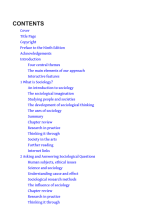Interbellum - Architecture - The International Style
7 important questions on Interbellum - Architecture - The International Style
What is The International Style?
- Modernist architectural style (1930-1970).
- Main ideas:
- Functionalism (form follows function).
- Rectilinear and 'clean".
- No decorations, no organic shapes.
- Opposite style to Art Nouveau.
- No references to architectural traditions.
- I.e., Modernists breaking with past.
- Characteristics:
- Use of new materials (Steel, concrete).
- Build higher & larger.
- Build faster.
- Aesthetic/visual benefits.
- Create better working/living environments.
To whom do we attribute the quote: "Less is more" and "God is in the details?"
- Modernist architect: Ludwig Mies van der Rohe (1886-1969).
Why is this German Pavilion (better known as the Barcelona Pavilion), by Ludwig Meis van der Rohe (1886-1969) a perfect example the International Style?
- No symmetry (away from the past).
- Abstraction:
- Lot of white.
- Flat, rectangular areas.
- No organic shapes.
- 'Clean'.
- Design is equally important.
- Barcelona chair.
- Use of new materials.
- Lot of glass.
- Metal, concrete.
- No decorations.
- Higher grades + faster learning
- Never study anything twice
- 100% sure, 100% understanding
What can you tell about this CANON building?
- Villa Savoye, by Le Corbusier.
- Made 1928-1931, in Poissy.
- Modernist architecture, the International Style.
- Perfect example for Le Corbusier's "Les Cinq Points."
- Modernist/ the International Style:
- Functionalism.
- Machine à habiter.
- Abstraction ('clean').
- White.
- Flat, rectangular shapes (no organic).
- New materials:
- Concrete.
- Metal.
- No decorations.
- No references to architectural traditions.
- In CANON:
- International style.
- Modernist architecture.
What doe you know about Les Cinq Points.
- Sort of manifesto for Modernist architecture by Le Corbusier.
- Corbusier points out 5 points for standardised architecture, that every building needs in its core.
- Sort of skeleton for every building, so they can be build faster and have a more homogeneous design.
- Points are:
- Les Pilotis.
- The pillars.
- Le toit-jardin.
- Rooftop garden.
- Le plan libre.
- No walls, you can choose how you want to design them.
- La façade libre.
- Liberty for design of the front, you can do whatever you like.
- La fenêtre en longeur.
- Long ribbon windows, possible because of the skeleton design of the building.
Although clearly influenced by it, Frank Lloyd Wright (1867-1959) was not a fan of the International Style.
What is the difference between his designs and the designs of architects from the International Style?
- Frank Lloyd Wright did not like the International Style's idea of Machine à habiter.
- Wanted to make buildings more than just a "machine."
- Connected buildings with nature for instance (Villa Fallingwater).
- Called his work "Organic architecture."
- Building organically designed from the environment.
- Mostly made very expensive villas for only the rich.
- Standardized architect was for a broad audience.
Who designed this building, and why is it a great example of Modernist architecture, in particular that of the International Style.
- Academy Building Bauhaus, designed by Walter Gropius.
- Builtin 1925, Dessau.
- Moderist because:
- Breaking with the past.
- Throw everything people like about buildings out of the window (pointy roof, symmetry).
- Abstraction:
- Not much colors, lot of white.
- Straight lines, flat areas.
- International Style:
- Higer/larger building.
- New materials.
- Metal and concrete.
- Functionalism.
- Utopian: Build better buildings to make people happier.
- Bauhaus' connection with "De Stijl."
- Mondriaan translated to architecture.
The question on the page originate from the summary of the following study material:
- A unique study and practice tool
- Never study anything twice again
- Get the grades you hope for
- 100% sure, 100% understanding































